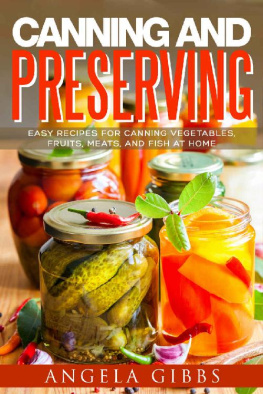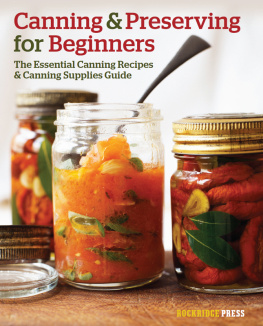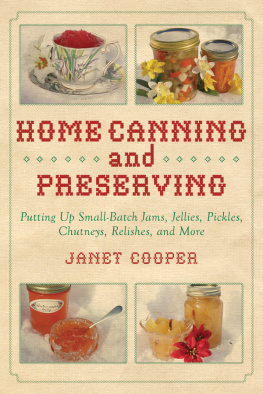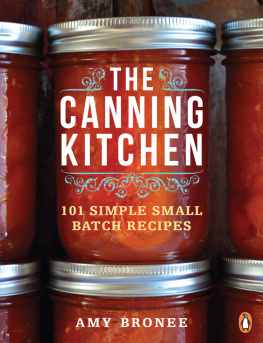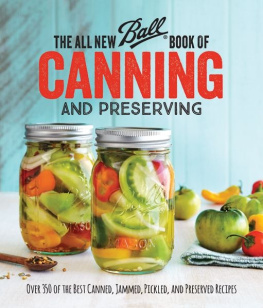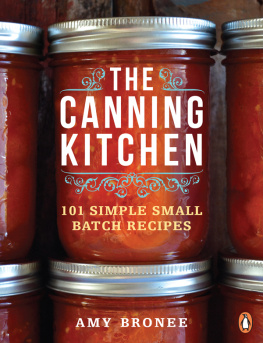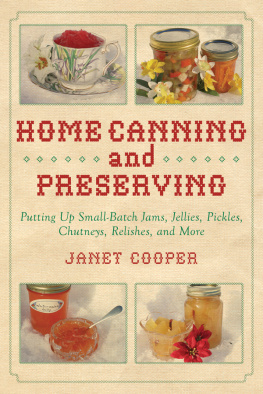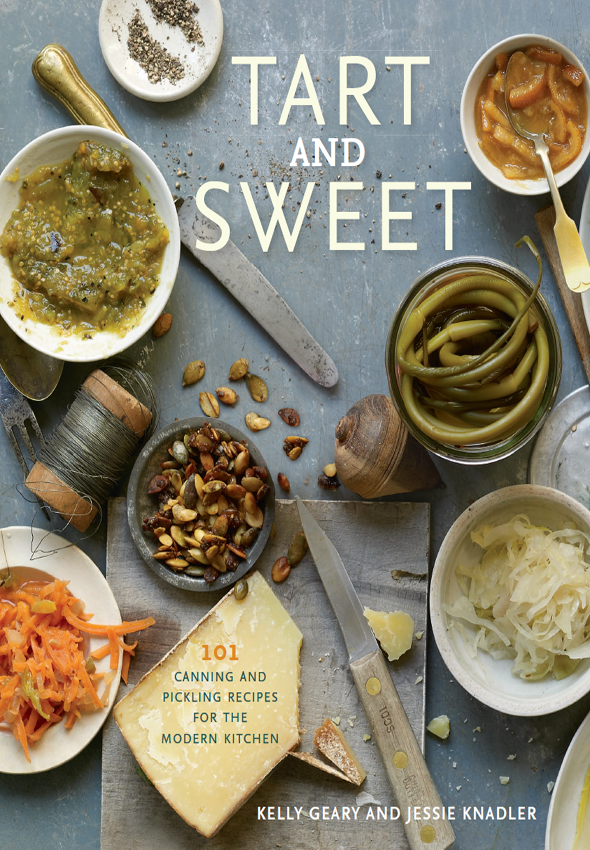
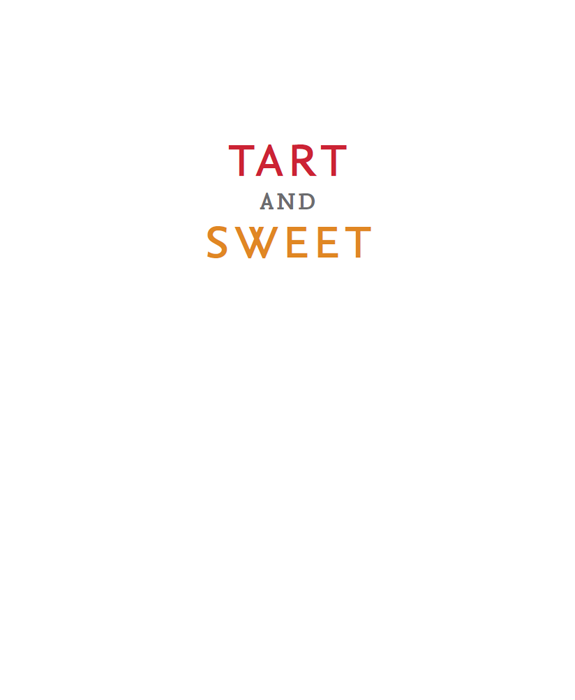
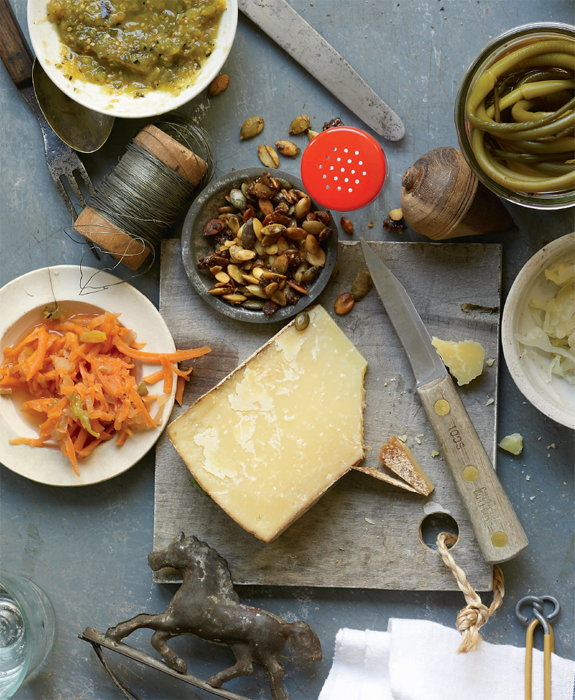
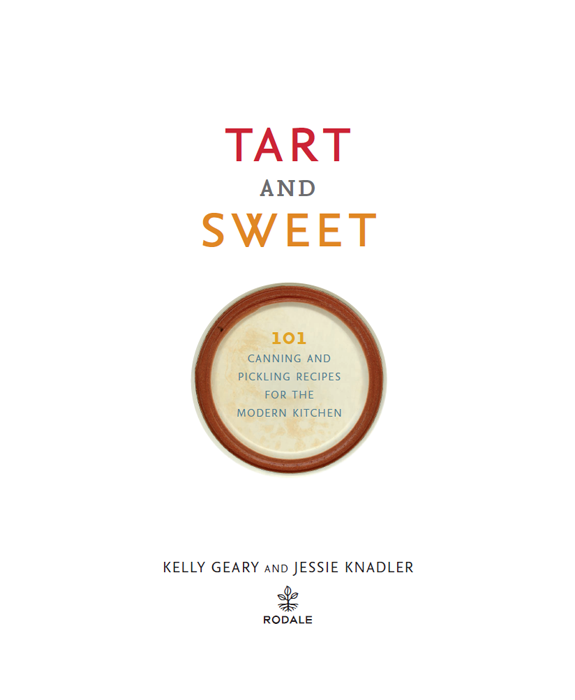

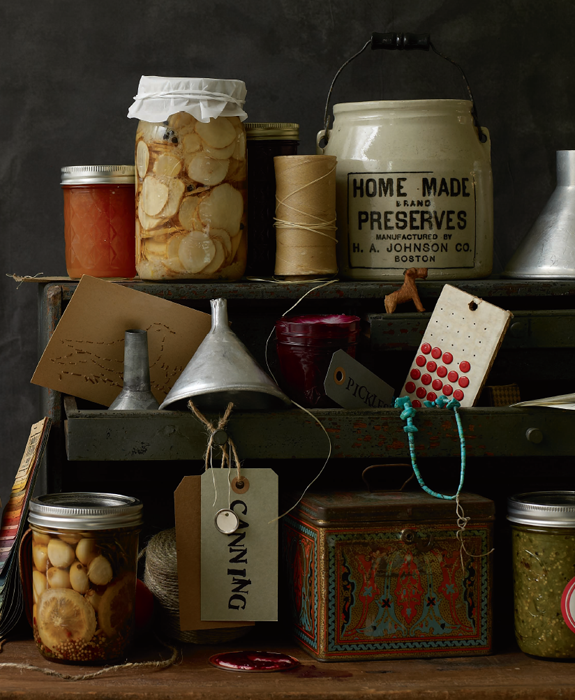
Contents
Introduction
Im always thrilled and amazed by the number of people who show up each night for the canning workshops I offer in my Sweet Deliverance kitchen. Curious home cooks, foodies, and back to basicsminded men and women alike hover around my worktablesometimes its standing room onlyas I explain the fundamentals of pickling and jamming, interrupted by the occasional ping! of jars cooling on a nearby shelf. (My shelves are so loaded with canned goods, in fact, that you might mistake me for a pioneer woman if my business werent located on the second floor on a busy Brooklyn street.) I get asked a lot of questionstwo of the most common being How long does canned food last? (answer: Officially, a year; unofficially, a long, long time) and Is sugar what preserves the food? (answer: No, but more about that later). For me, the crowd and their curiosity are evidence of just how popular home preserving has become. Theres the rustic appeal of wanting to know where your food comes from and the allure of saving the seasonal bounty for later, for sure, but I think this canning resurgence taps into something deeper: People want to know how to make things with their hands that are more tangible, more meaningful than sliding a mouse across a pad or queuing up a playlist on an iPod. Putting up (thats preserving lingo for canning and jarring) even a small amount of food is a reminder that we can take care of ourselves, feed ourselves and our families, without always relying on food manufacturers to do it for us. Canning is self-sufficiency in a jar.
I think its because of this innate desire for a life that is made, not bought, that home canned goods make such wonderful gifts. Once I discovered that my friends, family members, and clients seemed to appreciate a quart of pickled asparagus or a pint of banana rum butter so much more than a store-bought trinket, I all but stopped shopping for gifts and started making them.
But not all benefits of canning are so high-minded: With a bunch of canned food lying around, Im never at a loss for what to feed friends who happen to stop by. A few pickles, a bit of cheese, some fruit spreads, and bread on a plate make a fast, easy, and delicious snack. And cocktails! I use my canned creations to concoct the tastiest drinkslike mixing candied kumquats and Prosecco to serve up my famous (some might say infamous) Kumma Closer (see page for the recipe).
And although canning involves an initial investment of time and labor, it makes for faster cooking down the line. I live in a cozy one-bedroom Brooklyn apartment, and I put up food (not a lot, since my home kitchen is pretty small) to make subsequent mealsspaghetti with canned tomatoes with sardines and Pecorino, apple butter for baking, carrot daikon pickles for my beloved Banh Miso I dont have to spend a lot of time cooking during my off-hours. In these pages, youll find plenty of recipesfrom salads and main courses to desserts and cocktailsthat incorporate your home canned goods with delicious results.
When I was growing up in Naples, Florida, no one around me canned. Its not something I learned by watching my mother or grandmother sweat over a hot cauldron. As a kid, I never even went camping, let alone canning. Like a lot of Americans at that time, I was about as out of touch with where my food actually came from as a person could be. It wasnt until I moved to Northern California at the age of 23 and got a job working on the crepe truck at a farmers market that I realized how much I loved working with food, and being around people who shared that passion. This market, in a town called Arcata, was the place to socialize on the weekendseverybody (and their dog) came to hang out. There was always a band jamming in the background. Local farmers booths were stacked high with teacup-size morel mushrooms and wild asparagus so fresh and juicy it could be eaten raw. It was a far cry from the tomatoes and strawberries and tropical produce I was used to; there were things like kale and winter squash, mushrooms you could pick yourself, and seaweed you could harvest. I made friends with farmers and growers, most of whom were my age. Id never met a farmer under the age of 30I didnt even know it was a viable career option for someone my age (how wrong I was)! Being around these people, and learning from them, made me realize that I needed to work with real food. Not the stuff thats shipped across the country on a Sysco truck.
So I hit the road for New York City, where I became a student at the Natural Gourmet Institute. There, I learned about the health benefits of preserved food and that the typical American dietunlike other world cuisines with a rich preserving heritage (Middle Eastern, Asian, Mediterranean)is lacking in bitter and sour flavors. I began poring through canning cookbooks, new and old, and preserving things like kimchi and other fermented vegetables, which led to a serious interest in all things canned. Pretty soon I was swapping recipes with equally canning-mad friends and asking questions about how to make preserved foods healthier. Namely, why is there so much sugar in the average jam recipe? Are 5 cups of sugar really necessary to make something as simple as apple butter? To learn more about canning science, I enrolled in the Better Process Control School at Cornell University and realized that most of the sugar called for in canning recipes is more about satisfying Americas sweet tooth than about actually preserving the food.
But over the past few decades, our palates have started to change and evolve. So I started carefully developing my own recipes that reflect how people like me and my friends like to eat today. I began tinkering with different flavor pairingsblueberry lemongrass syrup, ramp kimchi, pickled nettles; interesting combinations I thought would pique the interest of friends who were also part of the booming Brooklyn food scene.
Soon enough, canning went from being a fun, creative hobby to part of my job as a chef. My company, Sweet Deliverancea food delivery service that makes fresh, ready-to-eat meals from local farm CSA shareswas really starting to take off. But as with any community-supported agriculture (CSA) program, each weeks offering is a reflection of the farmers seasonal bounty. In the fall, for example, I had crates and crates of apples to work with. But my clients could eat only so many of my homemade apple pies, apple crumbles, and apple galettes each week. So I canned the extra apples and gave them as gifts to clients at the end of the season. The delight they found in these homemade goods made me realize there was a cookbook waiting to be writtenone that tapped into peoples desire for this old-timey craft, but upgraded to reflect the way we live and eat today. So I teamed up with writer Jessie Knadlerwho started canning after moving from Manhattan to rural Virginia a few years agoto bring our passion for preserving to you.
Next page

